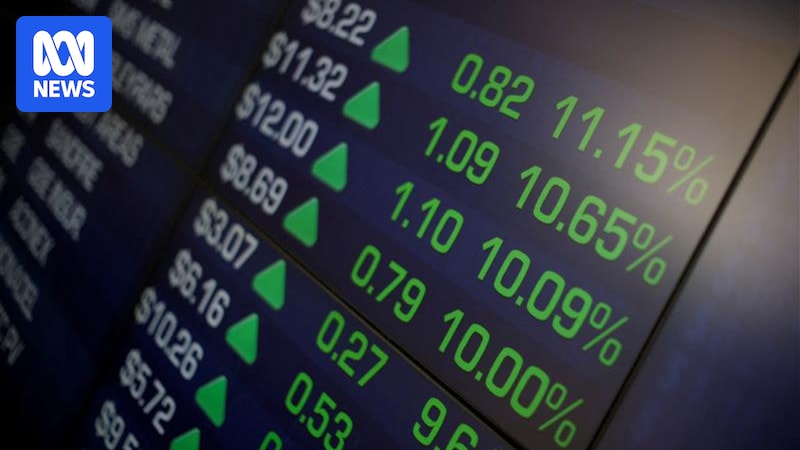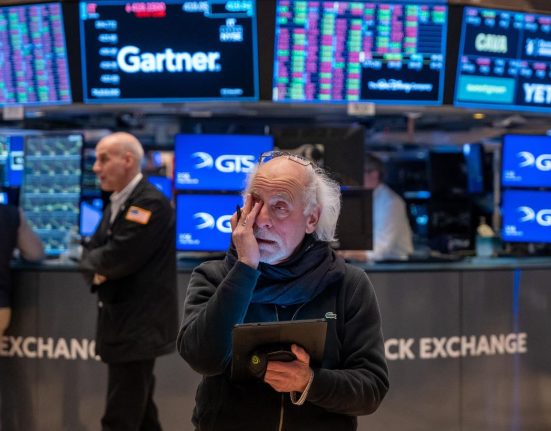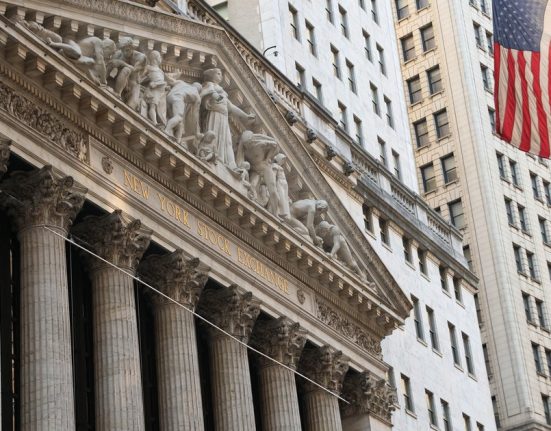This week, we’ve seen the Australian share market smash records, from fresh intra-day all-time highs (which occur during trading sessions) to record closing highs.
Whichever way you cut it, the Australian share market is performing exceptionally well.
It’s been a remarkable turnaround from the enormous volatility we saw in early April when US President Donald Trump announced his “reciprocal” tariffs.
So what happens next?
Economists point to the psychological stages of the investment journey.
While traders and investors might like to think of themselves as logical actors, like all of us, they’re human.
“It’s well-known investment markets move more than can be justified by moves in investment fundamentals, because investor emotion plays a huge part,” AMP’s head of investment strategy, Shane Oliver, noted.
As this chart demonstrates, a rollercoaster of emotions drives investor behaviour over the course of an investment cycle.
It’s a hair-raising ride on the investor rollercoaster., as this chart by Russell Investments shows. (Supplied: Russell Investments)
While you can’t predict the timing, psychologists say these stages are real and, when they occur, they put a mirror up to society.
Where are we now?
It’s easy to get lost in the machinations of the share market, but the workings of it are easy enough to explain.
The index most often tracked locally consists of the 200 largest stocks or companies by market capitalisation. It’s called the S&P/ASX 200.
Analysts try to determine the value of stocks and then buy and sell them depending on how that valuation compares to the stock price.
Stockbrokers have the job of buying and selling stocks on behalf of the public and financial institutions.
Risks to the value of stocks come from the companies themselves and from outside.
The biggest outside risks for stocks at present are Donald Trump’s tariffs and how they may affect international trade and inflation, and the health of the US economy.
As for companies themselves? They cough up information — namely, their financial reports — every six months.
The lead up is dubbed “confession season” for a reason.
Right now, analysts say investors are taking Donald Trump’s comments with a grain of salt.
Right now, one of the biggest risks to stocks is an unpredictable President Trump and the US economy. (AP: File)
They also want further confirmation from official data that the US economy — post-last week’s horror employment report — really is in trouble.
But as far as reporting season is concerned, companies have generally performed rather well and, crucially, say they will continue to do so.
“Earnings have to come through to the upside compared to expectations,” FNArena finance commentator Danielle Ecuyer said.
“That pretty much has held true for us as well for the US.”
Danielle Ecuyer says the outlook is rosy for many companies. (Facebook: Shareplicity)
She noted that many companies have had “great results” and then upgraded their outlook for the year ahead: “We’re seeing that very much in the big tech sector”.
Share prices have risen in reaction.
“At the moment, sentiment can remain robust.“
Where is the rollercoaster heading next?
So, investors are pleased that companies are meeting and beating their expectations. The problem is, the outside risks are not going away.
“All of that could be thrown out with the baby in the bath if President Trump decides to throw a few more spanners in the works,” Ms Ecuyer says.
“But obviously investors at the moment are turning a blind eye.”
Green means go, for now. (AAP: Joel Carrett)
Jamieson Coote Bonds portfolio manager James Wilson, who focuses on debt rather than equity markets, can see why investors are choosing to ignore macroeconomic risks.
“At the moment, with the direction of global [interest] rates staying low and inflation not being at dangerous levels… I can see bonds relatively well supported.”
But he warns there is clear evidence the US economy is weakening.
“Bond markets have moved with low yields since last week’s weaker inflation number, and it’s starting to price in a further slowing and downturn in the global economy.”
Navigating the share market is never a stroll in the park. (AAP: Steven Markham)
The psychology of financial markets
Part of the reason share markets, and financial markets more broadly, have been okay to push higher in the face of risks is the anticipation that central banks will cut interest rates.
This puts more money in the pockets of consumers and business.
But is there a bigger, psychological game at play here?
James Wilson argues the share market has not hit its peak yet because a degree of worry is still swirling.
“We’re not quite at the euphoric stage … we’re getting there,” he said.
Over the long term, the share market has proven extremely resilient.
That is, if you’re able to ride out the peaks and troughs, it’s possible to receive a return on your investment greater than what you might have with cash in a bank deposit.
But in the short term, financial market trends are driven, in part, by human psychology.
Psychologist Ellen Jackson said the market’s not ready to reach the euphoric phase, because investors can easily see the troubles in the world.
“I think we have this notion of dissonance — this disconnect between what we’re seeing and what we believe or feel,”
she said.
Dr Jackson observes, while the markets climb, factors like geopolitical tensions and the cost-of-living crisis still affect people’s daily lives.
She says it’s “inevitable” that the share market will reach a euphoric phase — “because most things in humans and human systems go through a cycle” — but it’s impossible to say when.
“It’s going to be according to all of the other dynamics in that wider field, that wider system, that will trigger it,: she said.
“Something significant might happen in global politics that switches things really quickly and our mood follows.
“But it could be that it’s a long, prolonged period of optimism and feeling encouraged. We don’t really know.”
The share market is capturing some optimism and hope for the future now, but it also seems to be a metaphor for an increasing willingness to take on risk.
As AMP’s Dr Oliver noted, the key to riding the roller coaster is not getting sucked into the emotion.
“Of course, this is easier said than done, so many investors end up getting wrong footed — by buying at the top when everyone is bullish and selling at the bottom when everyone is bearish.”







